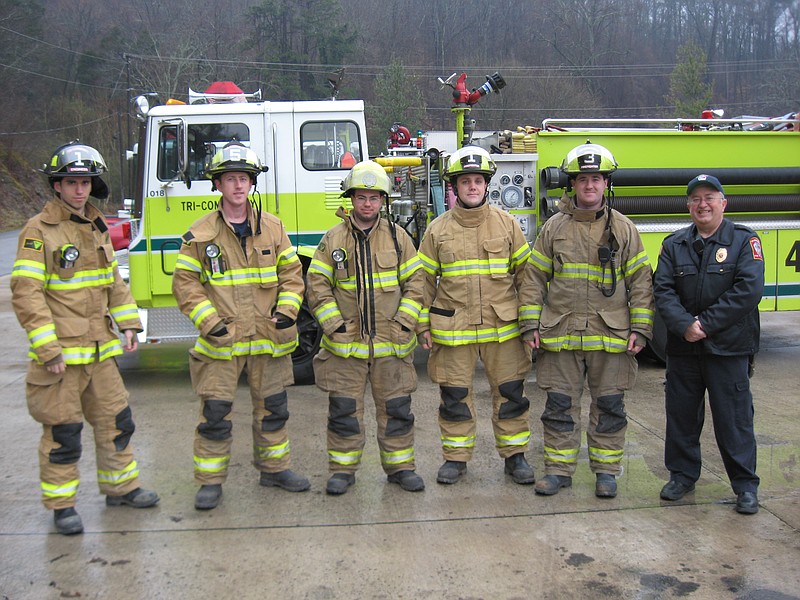After a year of construction and four years of planning, Station 3 of the Tri-Community Volunteer Fire Department opened the doors to its new facility in Apison during a grand opening ceremony Nov. 3.
The $2.3 million project is another testament to the rapid growth occurring in the East Hamilton area. As the county has grown over the past few years, so has the number of calls the volunteer fire department's five stations have received.
In 2007, the Tri-Community department received 1,127 emergency calls. By 2011, that number had jumped to 2,143, according to the Tennessee Fire Prevention Division of the Department of Commerce and Insurance. This year, Tri-Community Fire Chief Duane Pitts estimates the department will receive at least 2,400 calls.
"This station is responding to more and more calls all the time," he added.
In order to accommodate that increase, Station 3 needed to expand its services, as well.
"Our needs were a whole lot greater and we needed to be able to have more equipment and more people at the station," Pitts said.
While the previous station only had room for a fire engine and a ladder truck, the new facility is also able to hold a medical first response vehicle and a pumper tanker, as well as two to four additional apparatus, depending on size.
The old station, which currently sits next to the new building on Park Place, will not be abandoned, Pitts said. Instead, it will be used as a maintenance facility for apparatus repairs.
Another improvement in the new station is the living space. The previous station's living quarters had enough room for two unpaid firefighters to live at the station full time. The new facility is able to house six live-in volunteers - which Pitts said will greatly impact response times.
"With more people living here [at the station], there is a better chance of people being here when a call comes in," he explained.
The six live-in firefighters won't be the only ones gearing up when the call comes. The live-in program serves as a magnet for volunteers, said Pitts, meaning the more individuals permanently situated at the station, the more community volunteers will be willing to spend time hanging around the site.
"[a] volunteer doesn't want to be the only one coming into the station and being here by themselves," Pitts said. "They want to be with a group, and when the call comes in, they can respond as a group."
And with the new volunteer area able to hold 10 to 15 individuals - an improvement over the four to five people the old station's day room was able to accommodate - the station is hoping for an influx of volunteers, and all of them don't even have to be firefighters.
With half of the Tri-Community department's calls being medical-related, Pitts and fellow officials hope to put a stronger emphasis on developing non-firefighting medical response teams to relieve the firefighters. The station also has several non-firefighting civilian positions for community members looking to get involved.
"It doesn't matter if you want to be a firefighter volunteer or do something on the support side of things," said Pitts. "We have a lot of different jobs that can be done."
